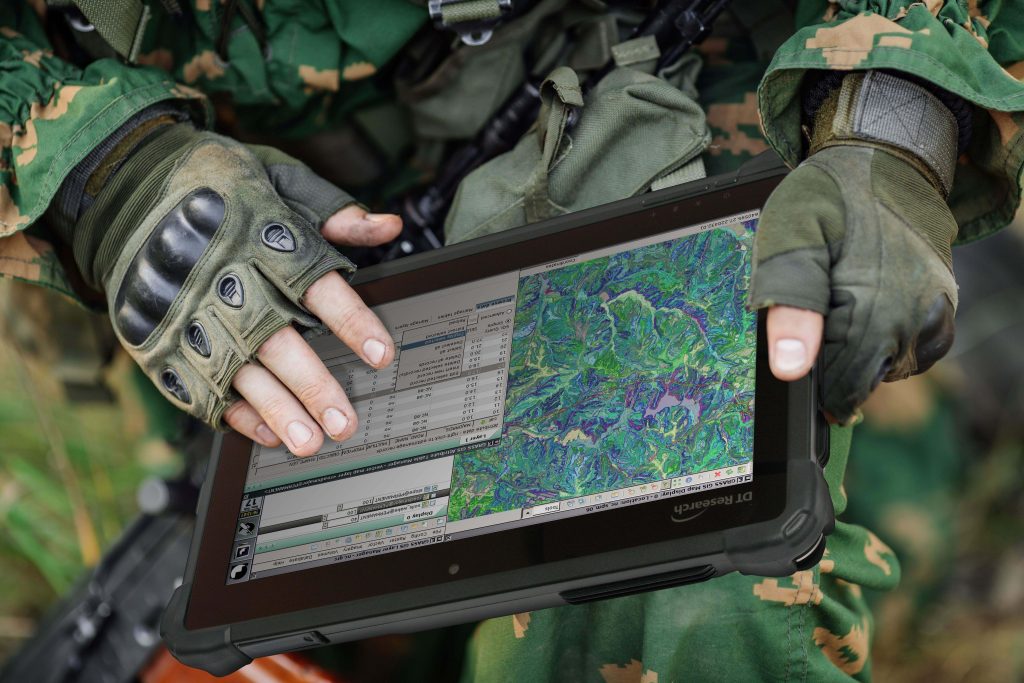In an era of rapidly evolving threats and technological advancements, the U.S. Army’s Unified Network Plan stands as a strategic cornerstone for achieving Multi-Domain Operations (MDO). This visionary plan not only links enterprise and tactical tools but also seamlessly integrates systems, applications, and networks, enabling the Army to operate effectively in contested and congested environments. At the heart of this transformative strategy lies the role of rugged tablets, which serve as indispensable tools for maneuver formations, ensuring reliable communications, data sharing, and security in both on-premises and cloud environments.
Unified Network Strategy: Paving the Way for MDO
The Unified Network Plan is not merely a technological advancement; it’s a paradigm shift in how the U.S. Army approaches its network architecture. By viewing the domains of operating and securing the network as terrain, the Army transcends traditional notions of network maintenance. This approach allows the Army to unify all aspects of the network while optimizing data flows and security simultaneously. This holistic perspective ensures that the network not only supports operations but becomes an integral part of strategic decision-making.
Enabling Multi-Domain Operations
At its core, the Unified Network Plan empowers the Army to execute Multi-Domain Operations effectively. By linking enterprise and tactical resources, the plan facilitates rapid decision-making, efficient resource allocation, and synchronized operations across all echelons. With rugged tablets as a key component, maneuver formations become cloud-enabled, enabling real-time data sharing and access to common data both on-premises and in the cloud. This capability is paramount in maintaining continuity and achieving decision dominance in complex operational environments.
Signal Soldiers’ Evolving Role
As the Unified Network Plan reshapes the Army’s operational landscape, signal soldiers play a pivotal role. The transition to a Unified Network demands that signal soldiers expand their skill sets to encompass a broader understanding of network architecture, security protocols, and data management. They must adeptly manage the movement of large datasets, create informative visualizations for senior leaders, and master the intricacies of big data platforms. The ability to develop data pipelines across cloud and on-premises technologies while safeguarding data in cyberspace becomes crucial in this evolving environment.
Zero Trust Architecture: Safeguarding the Network
The integration of rugged tablets and the Unified Network Plan also necessitates robust cybersecurity measures. The shift to the cloud and remote work introduces new challenges, including ransomware attacks and state-sponsored espionage. To address these threats, a Zero Trust architecture is imperative. This approach ensures that data and systems are protected against malicious actors. Through a centralized data access control plane, access can be consistently and transparently enforced across the expansive network.
Breaking Down Data Silos with Attribute-Based Access Control (ABAC)
Historically, data security policies have often led to operational bottlenecks. However, with the adoption of the Unified Network Plan and rugged tablets, agencies are positioned to eliminate these constraints. Attribute-Based Access Control (ABAC) offers a solution by allowing fine-grained control over data access. This approach enables agencies to streamline data sharing while adhering to strict data privacy and governance policies. ABAC not only enhances security but also promotes data-driven decision-making at scale. Rugged tablets are the perfect solution for streamlining data and allowing access to anyone on the network with the appropriate credentials, in real-time.
The U.S. Army’s Unified Network Plan, with rugged tablets at its core, serves as a transformative strategy that paves the way for Multi-Domain Operations. By seamlessly connecting enterprise and tactical resources, the plan empowers maneuver formations to excel in complex operational environments.
Signal soldiers evolve into technologically adept professionals capable of managing data movement, visualization, and protection. The integration of a Zero Trust architecture and Attribute-Based Access Control ensures data security while fostering data sharing and informed decision-making. As the Army’s network becomes a terrain of its own, the Unified Network Plan marks a significant leap towards achieving decision dominance and maintaining overmatch in an ever-changing landscape.
Rugged tablets offer efficient and effective ways to manage all of the moving parts for the Army’s logistics both on base and off base. They are designed and manufactured for tough environments, mobility, and accuracy. Many operational procedures can be managed, tracked and reported on directly through the tablet. Equipping soldiers with military-grade tablets, is equipping them for success.


